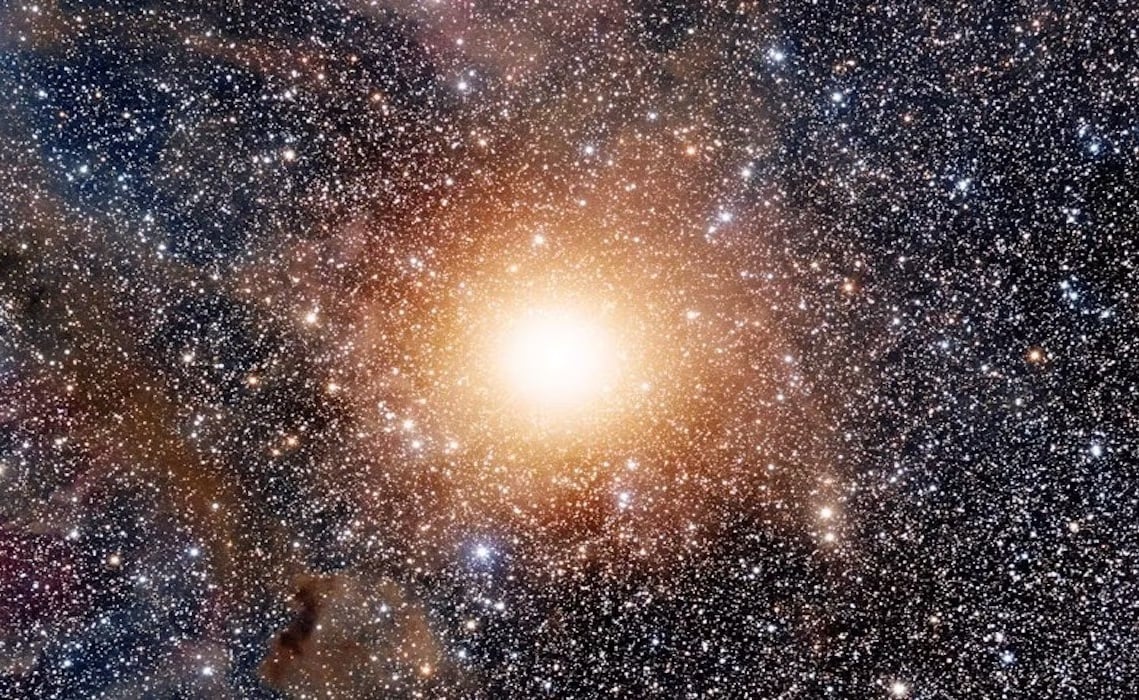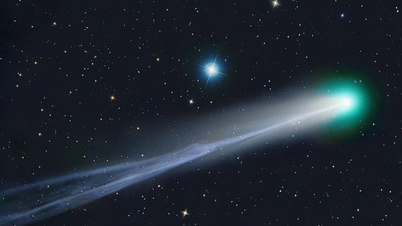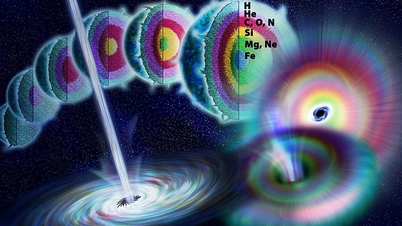(NLĐO) - Scientists have just offered a new explanation for the mysterious transformations of Betelgeuse, a "cosmic monster" 1,400 times larger than the Sun.
A study recently published in the scientific journal Astrophysical Journal indicates that the "cosmic monster" Betelgeuse – an object that has always puzzled scientists – is a binary star system with vastly different sizes.
Betelgeuse is the second brightest star in the constellation Orion, with an apparent magnitude 100,000 times greater than the Sun, and is located 724 light-years from Earth.

"Space Monster" Betelgeuse - Photo: NASA
Based on historical records, scientists predict that it is about to explode into a supernova.
More specifically, over 2,100 years ago, the Chinese historian and scholar Sima Qian described the star Betelgeuse as bright yellow, not red like Antares in the constellation Scorpio.
But around 2,000 years ago, the Roman scholar Hyginus described Betelgeuse as being orange-yellow like Saturn. By the 16th century, the Danish astronomer Tycho Brahe described Betelgeuse as redder than Antares at that time.
Currently, Betelgeuse is a super-red star.
It was this color change over time that led scientists to conclude that it was a star that had reached the final stage of a red giant and was about to explode.
However, the light signals from this monstrous star, which is 1,400 times larger than the Sun, are highly unusual.
It repeatedly flared up brightly and then faded away, giving scientists the scare that it was about to explode for many years.
Therefore, it is classified as a variable star, with its light fluctuating like a heartbeat. It also possesses two "heartbeats": one beating on a timescale slightly longer than one year and another beating on a timescale of about six years.
One of these cycles is Betelgeuse's fundamental mode, a pattern of brightening and dimming due to the star's nature. If that cycle is the 6-year cycle, Betelgeuse could explode sooner than expected.
However, if its basal heart rate is short, as some studies indicate, then its longer heart rate is a phenomenon known as a long secondary cycle, according to a research team led by astrophysicist Jared Goldberg of the Flatiron Institute (USA).
The authors point out that in this situation, the second heartbeat was due to an external influence, specifically a companion object.
"We have ruled out every possible source of internal variation that we can think of as a reason why the brightening and dimming phenomenon occurs in this way," Dr. Goldberg was quoted as saying by Sci-News .
They called the companion object Betelbuddy, but it's not yet possible to determine what type of object it is. However, the most likely possibility is that it's a companion star with twice the mass of the Sun.
Dr. László Molnár, an astronomer at the Konkoly Observatory (Hungary) and co-author, said they are studying observational methods that could potentially unravel the true nature of this companion object.
Source: https://nld.com.vn/giai-ma-nhip-tim-cua-quai-vat-vu-tru-tu-ma-thien-tung-mo-ta-196241025095840485.htm









































![[Video] The craft of making Dong Ho folk paintings has been inscribed by UNESCO on the List of Crafts in Need of Urgent Safeguarding.](https://vphoto.vietnam.vn/thumb/402x226/vietnam/resource/IMAGE/2025/12/10/1765350246533_tranh-dong-ho-734-jpg.webp)



































































Comment (0)